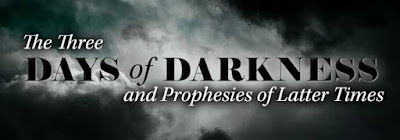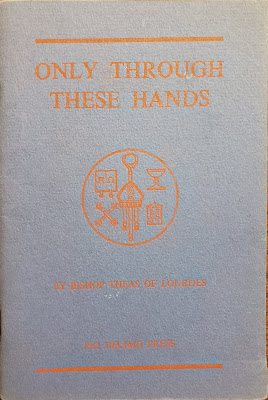I was asked to review "Secrets of the Sacred Heart" by Emily Laminet, which was just published by Ave Maria Press. The book on devotion to the Sacred Heart is structured by providing a chapter on each of the twelve promises revealed to St. Margaret Mary concerning those who are devoted to the Sacred Heart. Each chapter includes personal anecdotes from the author and applications for our own lives. Some good historical information is sprinkled throughout, and the book does a nice job of going further than merely reiterating the story of St. Margaret Mary which is already widely known.
In her opening pages, Laminet writes, "Although this devotion to the Sacred Heart traces back to the beginning of the Church, it is perhaps more relevant now than it ever was. The Sacred Heart devotion is for all of us, right where we are, now. In a world that continues to grow colder and more confused, Jesus' Sacred Heart sets our hearts on fire with his love in order to burn off the bondages of sin." Well said.
And later on, quoting St. Margaret Mary, we understand the importance of this devotion for our times: "This devotion is as a last effort of his love...to favor men in these last centuries with this loving redemption, in order to withdraw them from the empire of Satan, which He intends to destroy, in order to put them under the sweet empire of His love and thus bring many souls by His saving grace to the way of eternal salvation."
Good:
- The book includes a mix of St. Margaret Mary's writings with stories on how devotion to the Sacred Heart - like home enthronements and consecration to the Sacred Heart - lead to real fulfillment of the promises of our Lord even in this life.
- Good information on Fr. Mateo's home enthronement and how we are to make our own homes into a Bethany. He specifically called for families to spend one night in prayer once a month before the enthroned image of our Lord's Sacred Heart saying, "Dear Bethanies, come out with lighted torches to meet Jesus Crucified and prove to Him that your house is really His dwelling place." This monthly vigil in front of the image of our Lord's Sacred Heart as a family is surely a practice worth adopting.
- Incorporation of great prayers like Fr. Francois Xavier Gautrelet's Morning Offering Prayer. He was the founder of the Apostleship of Prayer in 1844. And the book featured a great history lesson on the Litany of the Sacred Heart on a point I never read before: "At [the time of St. Margaret Mary when the Litany of the Sacred Heart originated] the litany contained just seventeen lines; an additional thirty-three lines (the petitions invoking the 'Heart of Jesus') were later added to represent the thirty-three years of the life of Christ."
- Specific attention is given to not only the enthronement of our homes but those of our businesses, schools, and organizations to the Sacred Heart. Employers, principals, mayors, and everyone in a position of authority should enthrone their endeavors publicly to the Sacred Heart of Jesus.
Not So Good:
- Doesn't capitalize pronouns that refer to our Lord's name.
- Throughout the book, uses the 1992 Catechism only, referring to it as "the Catechism" as if it was the only one when it is one of dozens of catechisms. And the New Catechism has several key issues throughout
- Accepts the validity of post-1983 canonizations using the revised formula
- There are several typos throughout the book that I would not expect from a publisher like Ave Maria Press. In one part they reference "St. Pius XI" when they mean "St. Pius X" and in another place they attribute a quote to "Pope Paul XI" who does not exist. I assume they mean Pope Pius XI but I am unsure. And in another place, it says, "The Feast of the Sacred Heart is celebrated forty days after the Feast of Corpus Christi." That too is incorrect.























